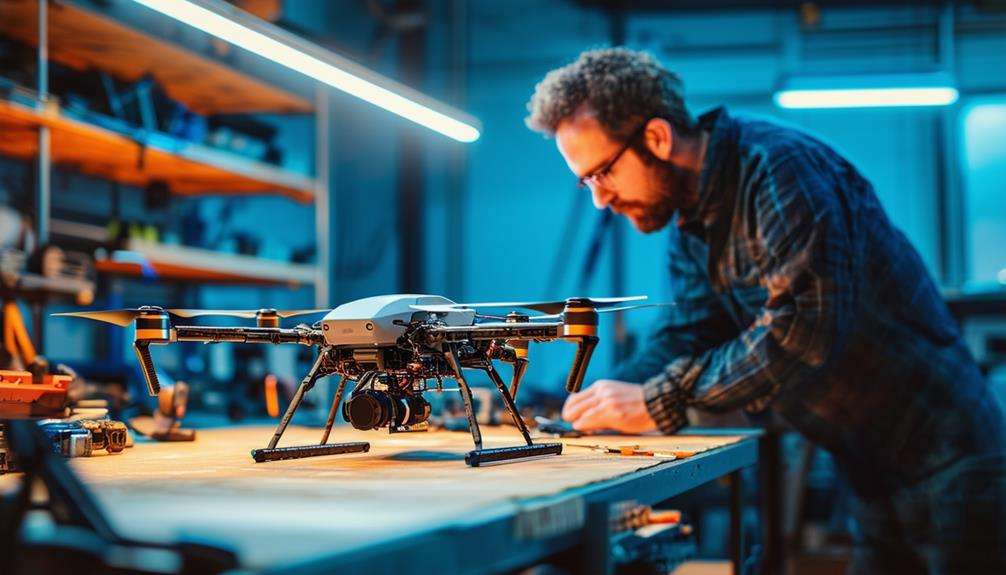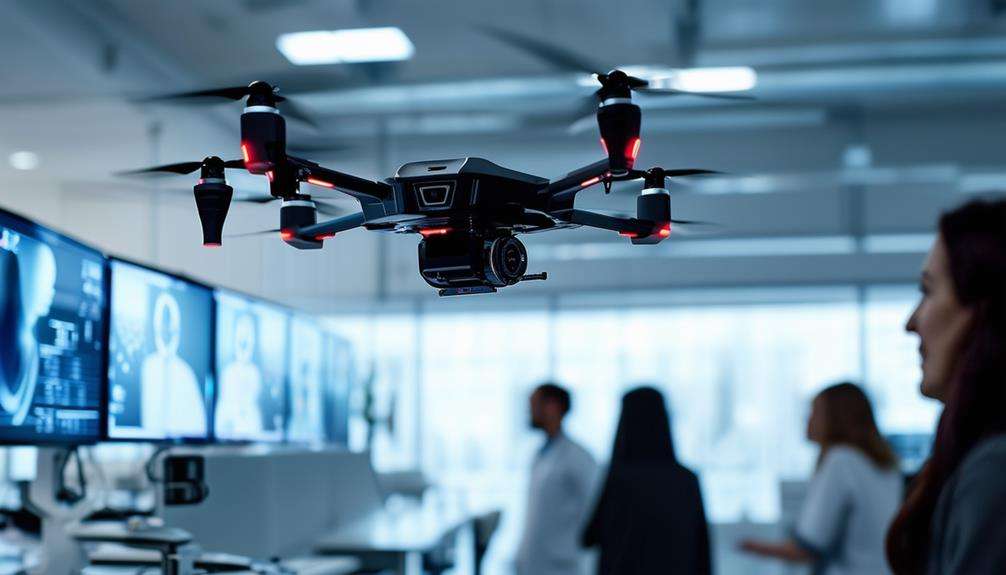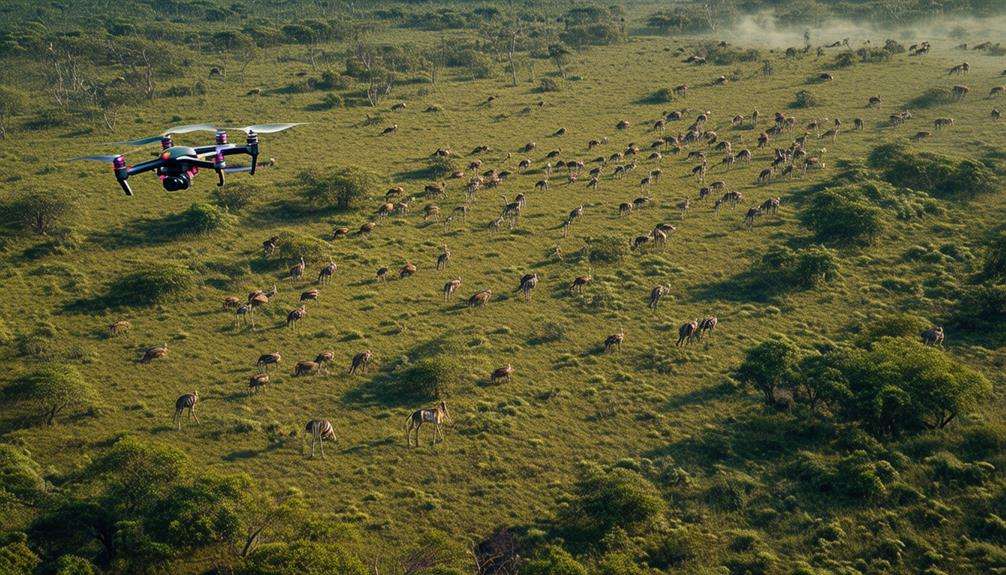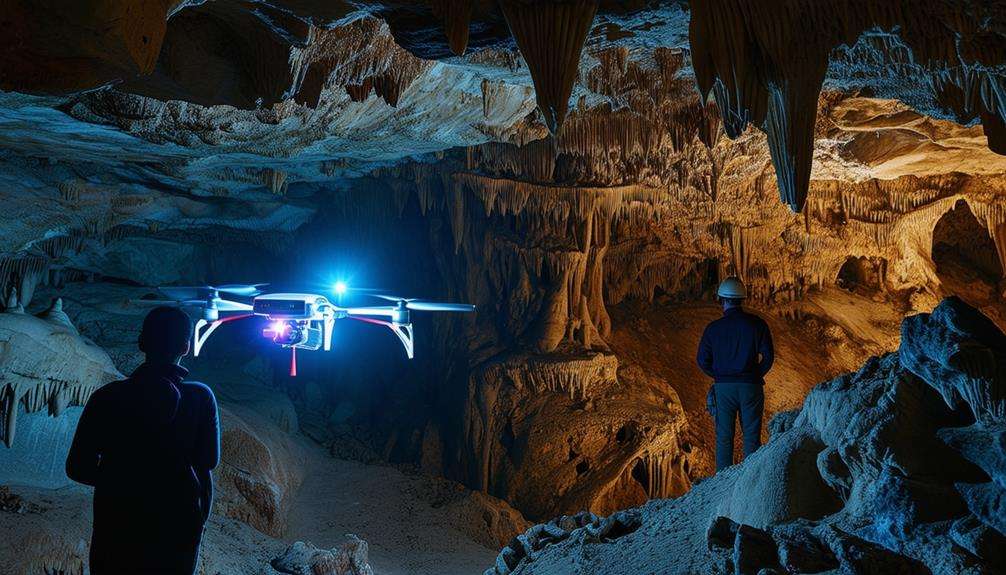Drone Art: Creating Masterpieces in the Sky
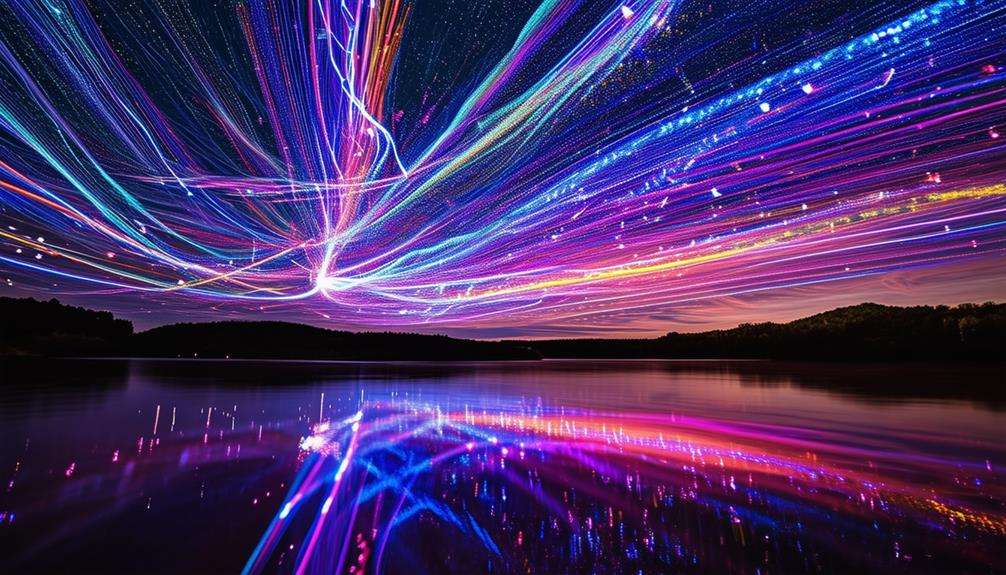
Imagine looking up and seeing a night sky transformed by a symphony of synchronized drones, each light weaving a story above you. You might wonder how such stunning displays come to life.
It all starts with a visionary concept, where artists and engineers collaborate to design intricate patterns and movements. The process involves meticulous programming and precise coordination, ensuring that each drone plays its part flawlessly.
But what's truly fascinating is the seamless integration of technology and artistry, creating a visual spectacle that pushes the boundaries of creative expression.
Curious about how these aerial masterpieces are crafted?
Understanding Drone Art
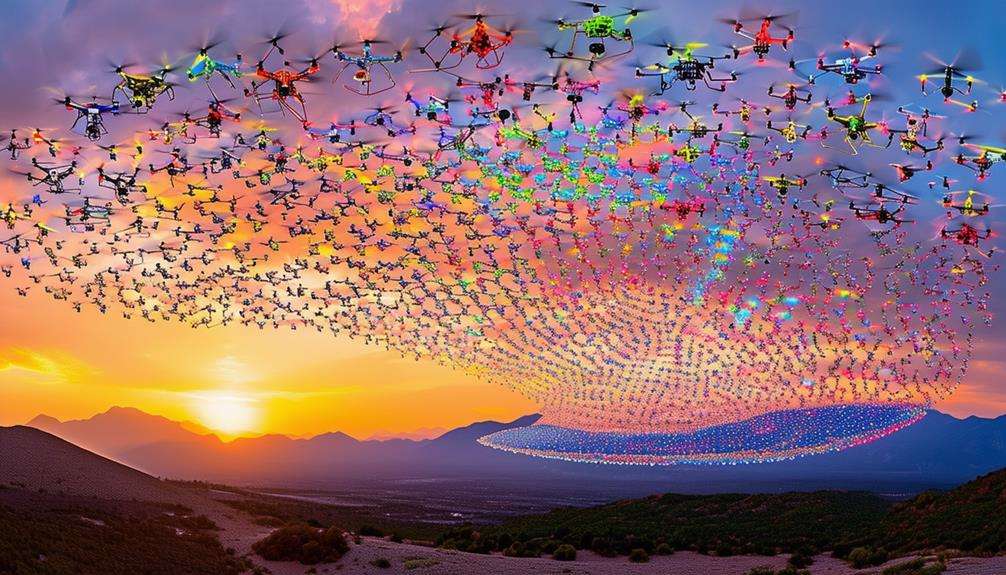
Drone art merges advanced technology with artistic creativity to produce captivating aerial displays. In these shows, drones fly in synchronized patterns, forming intricate shapes and seamless movements in the sky. Central to this spectacle are the LED lights attached to each drone, creating vibrant, colorful displays that mesmerize audiences.
These illuminated drones aren't flying at random; they're precisely programmed to move in harmony with music, adding an additional layer of engagement. Imagine attending a festival or concert where the skies come alive with animated figures and abstract designs, all enhanced by a symphony of lights and sounds. The LED lights make the drones visible from great distances, ensuring that everyone can fully appreciate the performance.
Drone art shows are far from spontaneous; they involve meticulous planning and coordination. The creative team spends considerable time brainstorming and sketching ideas before any drone takes flight. The Producer plays a crucial role in managing the entire process, ensuring that the final presentation is nothing short of breathtaking. Each performance pushes the boundaries of what's possible, blending technology and creativity in spectacular ways.
Conceptualizing the Vision
To bring these mesmerizing drone art performances to life, the process begins with conceptualizing the vision. This involves collaborating closely with creative clients who are passionate about both technology and artistic expression. These clients often aim to create heartwarming experiences or promote special events through stunning aerial displays.
The Producer plays a crucial role in coordinating all aspects of the production to ensure the client's vision is realized. This involves translating the initial idea into a well-crafted script for the drone art show. Success hinges on seamlessly blending technology with creativity to tell a compelling story in the sky.
Creative storytelling skills and expertise in drone technology are essential. The goal is to capture the essence of the client's vision and transform it into a breathtaking show that captivates audiences. The conceptualization process includes the following steps:
| Step | Description |
|---|---|
| Initial Meeting | Discuss the client's vision and artistic goals. |
| Idea Development | Brainstorm and refine ideas to create a unique concept. |
| Script Creation | Write a script that integrates the client's vision with technological elements. |
| Approval & Feedback | Present the script to the client for approval and make necessary adjustments. |
Designing the Drone Show
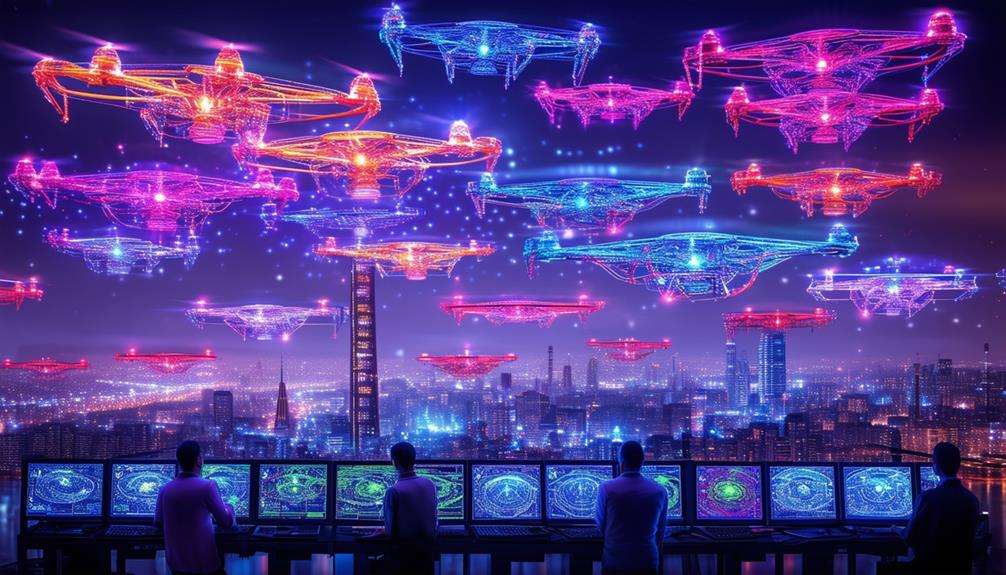
Designing a drone show begins with meticulously crafting storyboards to set themes, emotions, and visual elements. These storyboards serve as your blueprint, guiding the entire creative process. You'll envision how drones, typically weighing around 2 lbs and equipped with vibrant LED lights, will move to create stunning visual displays in the sky.
Next, you'll coordinate with a specialized company like Sky Elements Drone Shows to ensure seamless execution. They bring expertise in managing up to 2,000 drones, working in harmony to form intricate patterns, shapes, and animations. Clear communication of your vision is crucial, ensuring every drone's movement aligns with the storyboard's themes and emotions.
As you approach the final stages of your design phase, focus on the show's climax. These concluding moments need to leave a lasting impression. Whether it's a grand finale of swirling lights or a slow fade-out with a touching message, each drone's precise movement must be meticulously planned.
The goal is to captivate and entertain, transforming the night sky into a canvas of vibrant, moving art that amazes your audience.
Programming the Drones
Programming drones for aerial choreography requires meticulous planning to ensure they perform synchronized routines with music. The process begins by creating detailed scripts that outline each drone's movements, enabling them to form intricate patterns and shapes that will illuminate the night sky.
Thorough testing of the drones is essential to confirm they can execute programmed sequences flawlessly. Setting up the lights on each drone is another critical step, ensuring they're ready to shine brightly. Advanced technology, such as virtual collision avoidance simulations, plays a pivotal role in this phase, helping to prevent mid-air accidents during the actual performance.
After preparation, the focus shifts to programming the drones by inputting the created scripts into their control systems. Each drone must be precisely timed, often down to the millisecond, to move correctly.
Detailed pre-planning and precision are crucial for orchestrating a seamless and breathtaking aerial display.
Synchronizing Light Patterns
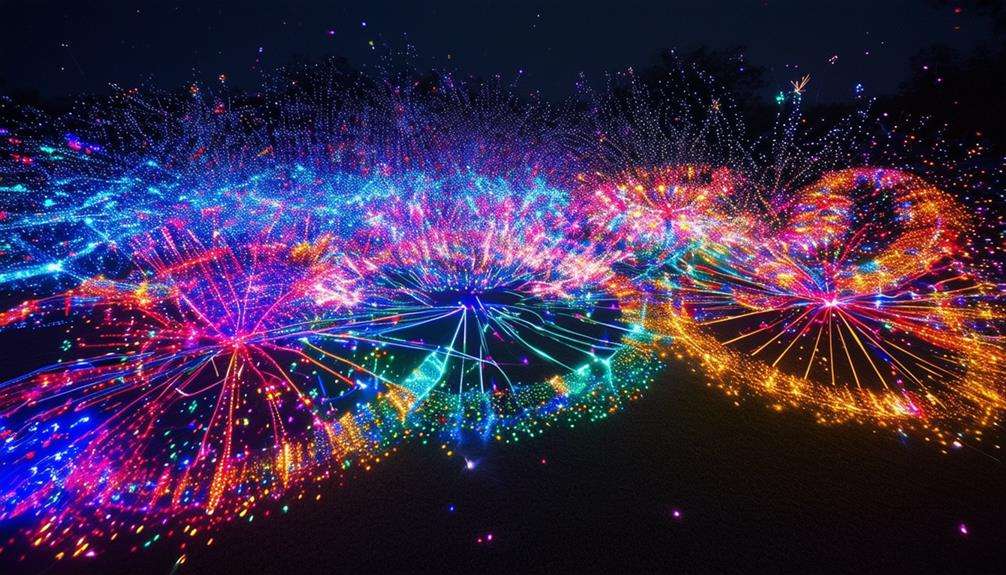
Programming drones to synchronize light patterns with music transforms the sky into a canvas of dynamic, illuminated art. For the first time, you witness how the fusion of technology and creativity produces mesmerizing spectacles.
The light-bearing drones fly in intricate patterns, forming shapes and animations that captivate the audience. Each drone, equipped with LED lights, dances in harmony with the music, creating a breathtaking visual experience.
The coordination required to achieve these synchronized patterns is astounding. Every movement must be meticulously planned and timed to ensure the drones don't collide while forming complex images and animations. Witnessing it for the first time feels like seeing a symphony in the sky, where each drone plays a part in an elaborate performance.
This blend of technology and artistry pushes the boundaries of entertainment. The dazzling displays of lights and movements leave a lasting impression on everyone watching.
As you marvel at the show, you realize that drone light shows represent a new frontier in visual and performance art, offering a unique and groundbreaking way to experience creativity.
Executing the Performance
Executing a drone art performance demands meticulous planning and flawless coordination to create a mesmerizing skyward spectacle. Primarily, each drone must undergo thorough testing. This involves verifying the hardware, updating the software, and ensuring the functionality of each drone's lights. The animation is then sent to the Flight Operations team for a test deployment to identify and rectify any potential issues before the actual show.
Attention to detail is crucial during this phase. Virtual collision avoidance simulations are conducted to prevent mid-air collisions, which could jeopardize the performance. The entire setup undergoes multiple rounds of testing and analysis to ensure flawless execution.
Here are the pivotal steps involved:
- Testing and Setup: Verify all drones' operational status, set up lights, and update software.
- Virtual Simulations: Conduct collision avoidance tests to prevent in-air mishaps.
- Test Deployment: Send the animation to the Flight Operations team for preliminary runs to identify and correct issues.
Impact and Future Trends
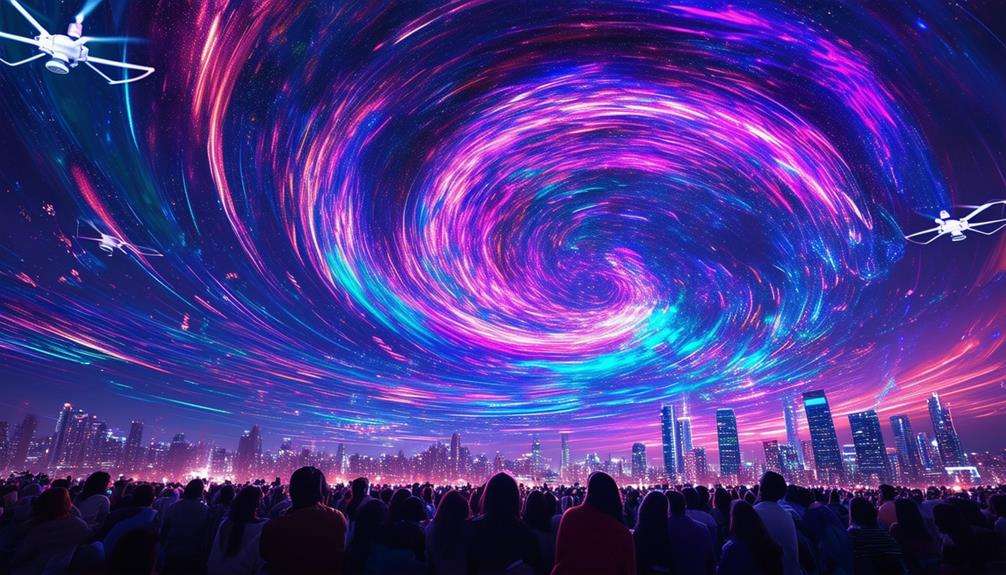
Meticulous planning and flawless execution in drone art performances leave a lasting impact on audiences and pave the way for future advancements in this unique medium. These performances, especially those dedicated to health workers, symbolize love, hope, and solidarity during challenging times. By provoking contemplation on peace, unity, and community creation, drone art engages audiences in ways that traditional mediums can't match.
Collaborations with art organizations and foundations amplify creativity and outreach, leading to inventive and impactful artistic expressions. These partnerships transcend traditional boundaries, making drone art a powerful tool for storytelling and symbolic communication.
Imagine a sky filled with drones forming intricate patterns that evoke strong emotional responses—this is the future of art.
As drone technology evolves, expect more creative and impressive displays. The future of drone light shows is predicted to become a standard form of entertainment. This shift will open new possibilities for artists to experiment with scale, complexity, and interactivity. The endless inventive potentials of drone art will continue to push the boundaries of artistic expression.
Conclusion
You've experienced the magic of drone art, where technology and creativity merge to transform the sky into a canvas for breathtaking masterpieces. Each step, from conceptualizing the vision to executing the performance, demands meticulous planning and seamless synchronization.
As drone art continues to evolve, it promises even more awe-inspiring displays, constantly pushing the boundaries of what's possible. Keep your eyes on the sky; you never know when the next stunning show will illuminate the night.

